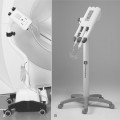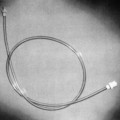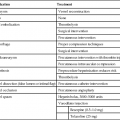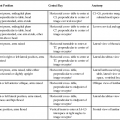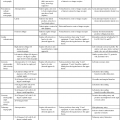CHAPTER 7 After completing this chapter, the reader will be able to perform the following: The patient’s chart should also be assessed to review any previous examinations as well as to review the patient’s blood work. Although there are no hard and fast rules as to the type of blood work that is necessary, if any, this part of the preprocedure history may be moot. Depending upon the patient, the procedure, and hospital or physician protocol, possible blood work could include any combination of the following tests: hemoglobin and hematocrit, blood urea nitrogen (BUN), creatinine, prothrombin time (PT), platelet count, international normalized ratio (INR), and activated partial thromboplastin time (aPTT). The results should be reviewed and pertinent information should be noted on the patient’s chart, such as the status of the patient’s renal function, bleeding tendency, and whether there have been previous reactions to contrast agents. Box 7-1 lists the normal values for a variety of laboratory tests.
Principles of Patient Care
 Identify the general principles for all special studies
Identify the general principles for all special studies
 Identify the need for strict confidentiality
Identify the need for strict confidentiality
 List and describe the components of the patient preexamination and history
List and describe the components of the patient preexamination and history
 Identify the need for pharmacologic awareness
Identify the need for pharmacologic awareness
 Identify the need and describe the process for obtaining an informed consent
Identify the need and describe the process for obtaining an informed consent
 Identify the need for preprocedure equipment preparation
Identify the need for preprocedure equipment preparation
 Describe the need and process for proper documentation
Describe the need and process for proper documentation
 Describe the process of patient instruction
Describe the process of patient instruction
 Describe the patient’s preprocedural, intraprocedural, and postprocedural care
Describe the patient’s preprocedural, intraprocedural, and postprocedural care
 Define contrast material administration and filming
Define contrast material administration and filming
 Identify the risks associated with the catheterization procedure
Identify the risks associated with the catheterization procedure
GENERAL PRINCIPLES
 Preexamination history, consultation
Preexamination history, consultation
 Signed and witnessed informed consent
Signed and witnessed informed consent
 Patient instruction and preprocedural care
Patient instruction and preprocedural care
 Contrast administration, filming and performance of interventional treatment, if scheduled
Contrast administration, filming and performance of interventional treatment, if scheduled
 Postprocedural care and instructions
Postprocedural care and instructions
 Awareness of the risks associated with catheterization and contrast medium administration
Awareness of the risks associated with catheterization and contrast medium administration
Preexamination History and Consultation







